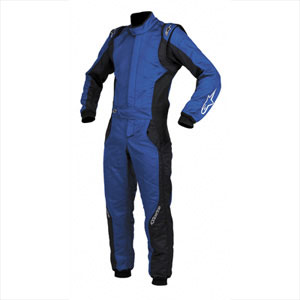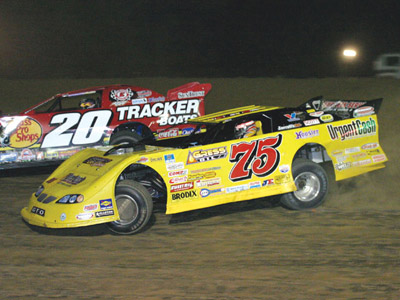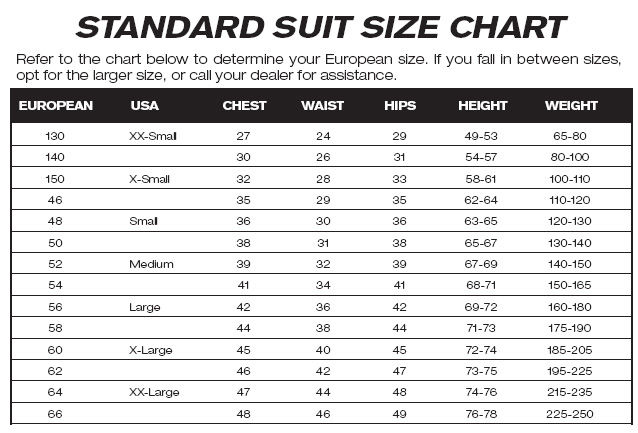SFI:
SFI Ratings are determined by the results of several tests conducted on racing suits for fire retardant capabilities and Thermal Protective Performance (TPP). The standard spec for racing suits is 3.2A, or 3.2A/1. Superior construction will yield ratings of 3.2A/3, and 3.2A/5. The increasing last digit indicates an increase in the length of time you will be protected by your firesuit before it succumbs to the flames.
What does this mean to you, the consumer? It means that you have a way to differentiate between quality-assured products and untested products. A driver suit that is certified to meet SFI spec has been laboratory tested and has passed the requirements of the tests. Those manufacturers who certify their products as SFI approved demonstrate their commitment to providing the highest levels of safety for their customers.
3.2A/1 gives 3 seconds until a second degree burn
3.2A/3 gives 7 seconds
3.2A/5 gives 10 seconds
3.2A/10 gives 19 seconds
3.2A/15 gives 30 seconds
It is important to understand that SFI Rating do NOT represent the number of fabric layers in the sfi rated racing suit.
TPP:
TPP ratings indicate the length of time the person wearing the garment can be exposed to a heat source before incurring a second degree or skin-blistering burn. The higher the value, the longer before you will incur a second degree burn. Divide the TPP Rating by 2 in order to measure the time until a second degree burn incurs:
|
SFI Rating
|
TPP Rating
|
Time to 2nd Degree Burn
|
|
3.2A/1
|
6
|
3 Seconds
|
|
3.2A/3
|
14
|
7 Seconds
|
|
3.2A/5
|
20
|
10 Seconds
|
|
3.2A/10
|
38
|
19 Seconds
|
|
3.2A/15
|
60
|
30 Seconds
|
|
3.2A/20
|
80
|
40 Seconds
|
Other tests conducted to determine SFI rated suits are the After-Flame test (indicates how long the garment material takes to self-extinguish following the application of a direct flame), Thread Heat Resistance, Zipper Heat Resistance, and Multiple Layer Thermal Shrinkage.
Snell:
The Snell Memorial Foundation (SMF) is a non-profit organization dedicated to the research, education, testing, and development of helmet safety standards.
Each segment of racing vehicles has its own Snell Standard Rating. On our website, the standards you will encounter are related to automotive (SA2015 or Snell SA2020 race helmets), kart (Snell Karting helmets), and motorcycle racing (M2015 or M2020).
Ratings are determined by a battery of tests conducted in SMF’s state-of-the-art testing facility. Included are test for Impact, Positional Stability, Dynamic Retention, Faceshield Penetration, Flame Resistance, etc.
What does this mean to you, the consumer? It means that you have a way to differentiate between quality-assured products and untested products. Racing helmets or karting helmets (even snowmobile helmets!) that are certified to meet Snell standards have been laboratory tested and have passed the requirements of the tests. Those manufacturers who certify their products as Snell approved demonstrate their commitment to providing the highest levels of safety for their customers.
REF: http://www.smf.org/
TUV Homologation:
TÜV SÜD AG is a leading technical service company active in the Industry, Product and Transport sectors. Its range of services encompasses consultancy, inspections, tests and expert opinions, as well as, certification and training. Its objectives are reliability, safety and quality, as well as environmental protection and cost effectiveness.
The company partners with leading industry manufacturers in numerous areas related to safety, internal manufacturing processes and product quality, and codes/standards development. They perform research, testing and certification for nearly every part of a vehicle imaginable, from tires to electronics to glass, plastics, fabrics and engines.
Products sporting the “TUV Homologated” stamp ensure that you, the consumer, will receive and experience premium performance via quality and safety.
REF: http://tuvamerica.com/industry/automotive.cfm
FIA Homologation:
Since its birth in 1904, the Fédération Internationale de l’Automobile (FIA), has been dedicated to representing the interests of motoring organizations and motor car users throughout the world. It is also the governing body of motorsports worldwide.
This combination of road and track gives the FIA a unique responsibility as an independent world body concerned with a wide range of automotive, motoring and mobility issues.
The FIA is a non-profit association which brings together 222 national motoring organizations from 130 countries on five continents. Its member clubs represent over 100 million motorists and their families. This is a powerful mandate which the FIA is proud to defend. On issues such as safety, mobility, the environment and consumer law the FIA actively promotes the interests of motorists at the United Nations, within the European Union and other international bodies.
Products sporting the “FIA Homologated” stamp ensure that you, the consumer, will receive and experience the premium performance, quality, and safety afforded by contributions from FIA’s global network of interested and pro-active members to affiliated manufacturers.
REF: http://www.fia.com/thefia/Organisation/organisation.html
CE Certification:
The CE mark certifies that a product has met European Union health, safety, and environmental requirements, which ensure consumer safety. By affixing the CE marking, the manufacturer, its authorized representative, or person placing the product on the market or putting it into service asserts that the item meets all the essential requirements of the relevant European Directive(s).
So, if you happen to live in Europe, you may rest assured that any product stamped with this mark is deemed safe according to your governing region’s standards and requirements for public health and safety. A lot of motorcycle and snowmobile gear will carry this designation.



